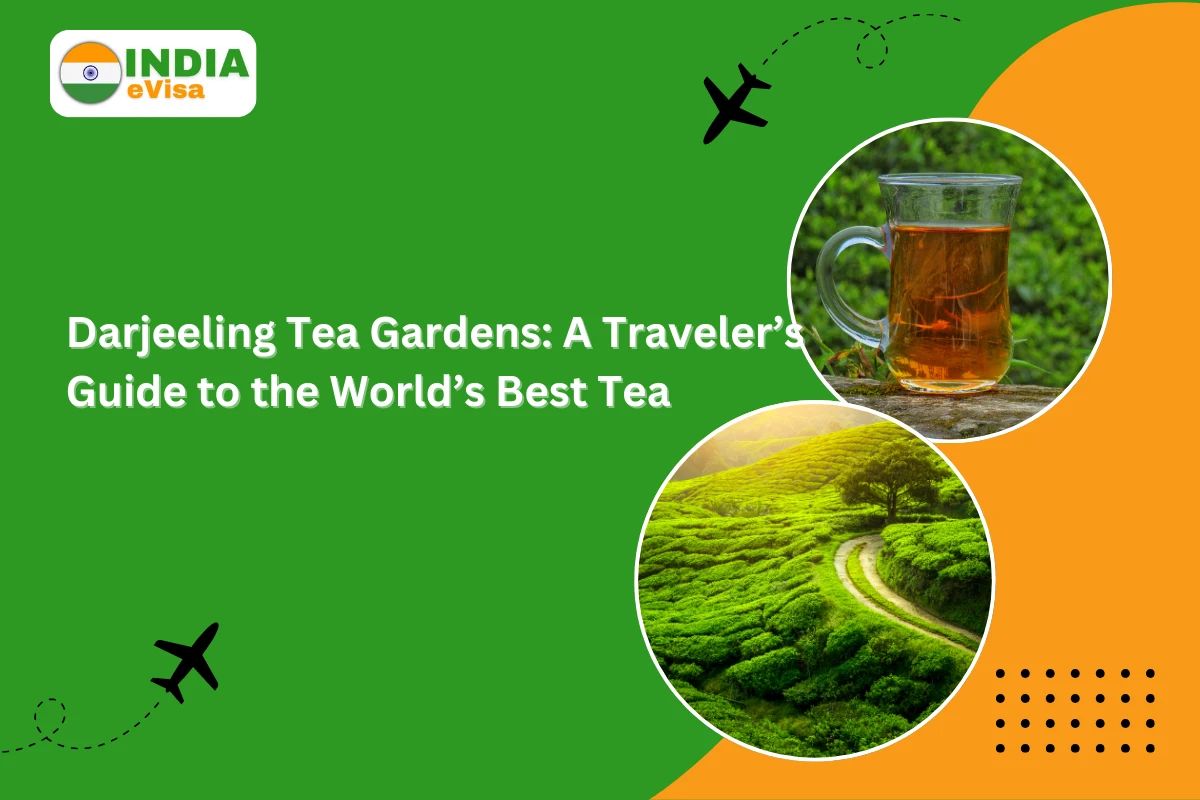Darjeeling Tea Gardens: A Traveler’s Guide to the World’s Best Tea

If you love tea, slow mornings, and soft green hills, the Darjeeling Tea Gardens are a place you will remember. The Darjeeling Tea Gardens sit high in the Himalayan foothills and make one of the world’s most loved teas. The air, the mist, and the care of the workers give each cup a taste you cannot easily find anywhere else. This guide will explain everything in simple words — the history, how tea is made, which gardens to visit, when to go, how to plan your trip, and useful travel tips so you leave with no doubts.
Why Darjeeling tea is special
The plants in the Darjeeling Tea Gardens grow at high altitudes, in cool weather, and in soil mixed with mountain minerals. These conditions give the tea a light, floral aroma and a taste people call “muscatel” — a soft, fruity note like a grape. The quality of Darjeeling tea is protected and watched over by official bodies so the name keeps its value and trust. Knowing this helps you understand why tea from these hills tastes different from lowland teas.
A short, friendly history
Tea growing in the Darjeeling hills began during the British period in the 1800s. Small experiments with tea plants soon turned into full tea estates. Over time, many Darjeeling Tea Gardens were planted across the slopes. Some gardens are very old and have a long history. Others are newer, focusing on organic farming and better worker care. When you visit a garden, you are seeing a living history of work, weather, and farmers’ care that shapes every cup.
How tea is picked and made — the simple truth
Most estates in the Darjeeling Tea Gardens still pick tea leaves by hand. Workers choose the young leaves and buds carefully. After plucking, the leaves are withered, rolled, and processed in small local factories. This careful, mostly manual method keeps the delicate tastes and smells. The time of year when leaves are picked — called a “flush” — changes the taste a lot:
- First Flush (spring): A light, floral cup that feels fresh and bright.
- Second Flush (late spring/early summer): A stronger cup with the famous muscatel flavor.
- Autumn Flush: A smooth, rich cup, not as brisk as spring teas.
Knowing these flushes helps you pick which tea you want to taste or buy.
Which tea gardens should you visit?
There are many estates to choose from. Some of the friendliest and most visited are Happy Valley, Makaibari, Glenburn, Margaret’s Hope, and Singtom. When you visit a garden you can walk among rows of bushes, meet the pickers, and watch how the leaves are processed in the factory nearby. Many gardens also let you taste fresh brews and buy tea straight from the source — this is the best way to take home real Darjeeling flavors. If you want a quiet morning, choose a garden-stay or a homestay inside or near an estate.
When is the best time to go?
For clear views and active tea work, plan your trip from March to November. If you want the light and fresh First Flush, visit in March–April. For the muscatel Second Flush, visit in May–June. The monsoon months are very green and beautiful, but roads can be wet and views may hide behind clouds. No matter when you go, mornings in the Darjeeling Tea Gardens are lovely — the mist and scent make the walk magical.
How to reach Darjeeling (quick travel tips)
Most travelers fly to Bagdogra Airport (IXB) or travel by train to New Jalpaiguri (NJP). From Bagdogra or NJP it is about a 3–4 hour drive to Darjeeling by car on the hill road. You can also try the toy train experience on parts of the route if you have time. Plan transport carefully because mountain roads are slow and winding.
If you are coming from another country, check India Visa Online options before booking flights. Also keep an eye on your India Visa Status so you travel with the correct documents. Using the official visa site is important — avoid fake sites that charge extra fees.
What to taste and buy
Start with a First Flush cup to notice light floral notes. Then try a Second Flush to find the muscatel sweetness. If you like a smooth cup, try an Autumn Flush or a single-estate brew. When you buy, choose vacuum-sealed packs to keep tea fresh. Buying directly from the Darjeeling Tea Gardens or their official shops helps ensure you get real estate-labelled tea, not cheap copies.
Responsible and kind travel
When visiting the Darjeeling Tea Gardens, please be polite. Ask before photographing workers, respect garden rules, and ask about estate efforts for fair wages or organic farming if that matters to you. Buying tea from the estate helps local families and keeps the old tea traditions alive.
What to pack and final tips
Pack sturdy shoes for walking, a warm jacket for cool mornings, and a small bag for tea packets. Keep some cash for small tea shops and tips. Take your time while tasting — good tea reveals itself slowly. Sit with a cup, listen to the hills, and talk with the people who work there. That is the true joy of visiting the Darjeeling Tea Gardens.
